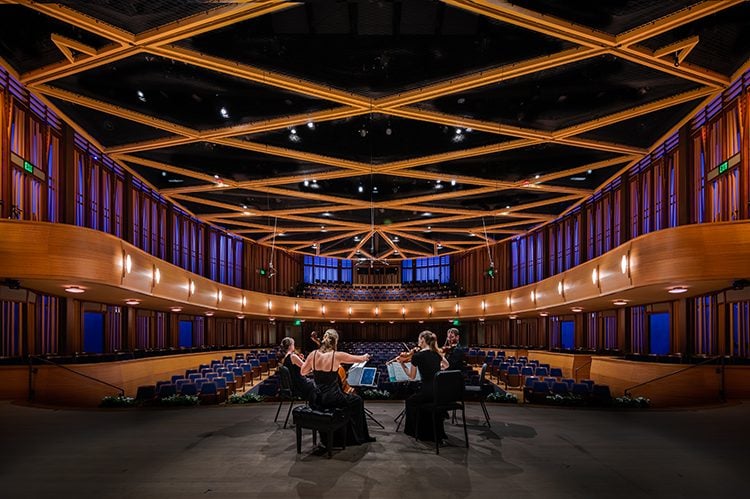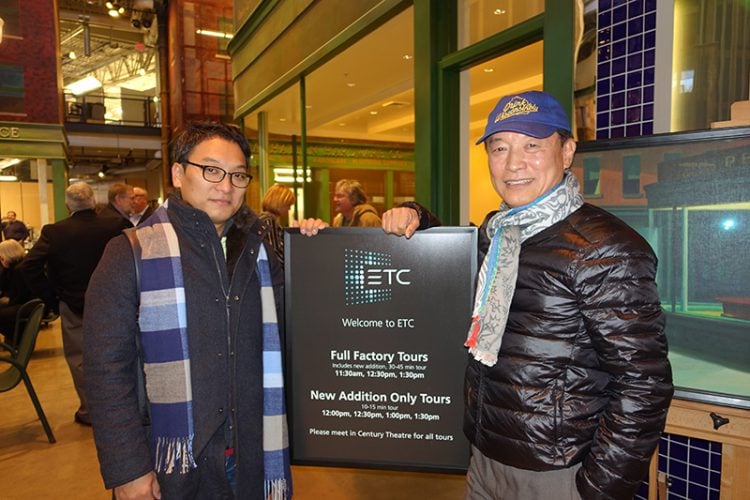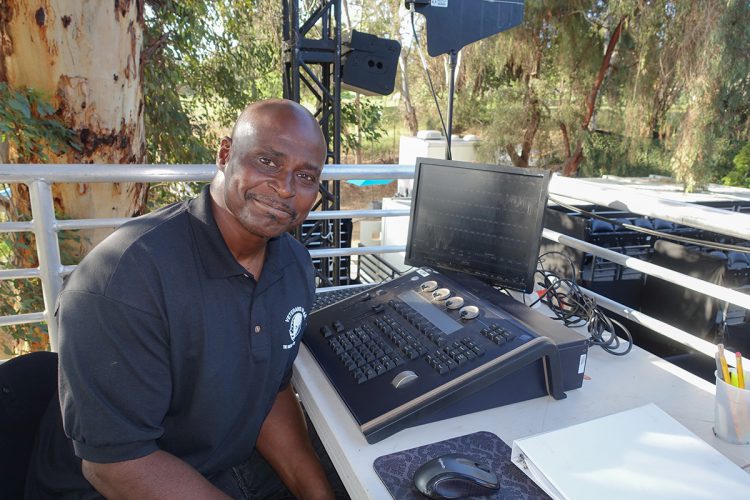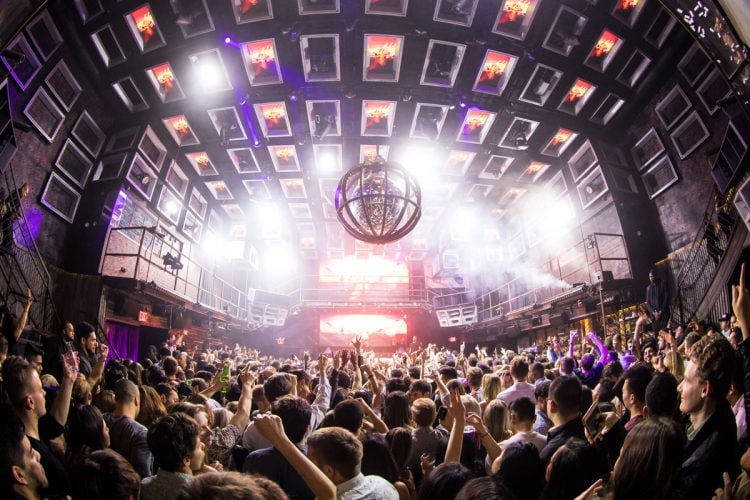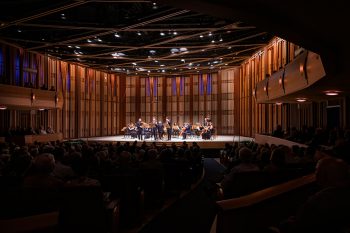
Located in the heart of La Jolla Village, the 49,200-foot facility houses two performance venues with a total capacity of 620. The 49-foot stage can be configured for concerts, theatre, lectures, or film. Curtis Kasefang of Theatre Consultants Collaborative, based in Raleigh, North Carolina, turned to ETC and High End Systems to create a house rig that could be augmented by touring shows. “There were several factors that drove fixture selection: color rendering, fixture noise, and heat contribution chief among them,” says Kasefang. “The client had a clear vision of a very theatrical space, not your traditional concert hall. He wanted it to be able to support acoustic music, amplified music, film, and secondarily dance and other performing arts.”
Kasefang faced several challenges. “The noise floor was very low, so lighting fixtures had to be fanless for acoustic events and the lighting had to be invisible. The audience chamber and the stage are surrounded by wooden grillage, through which you can see the enclosing box, which was built as an enveloping cyclorama. The initial architectural lighting fixtures didn’t cut it, so we employed the ETC ColorSource CYC fixtures which provided a beautiful quality of light that felt limitless.”
FIXTURES AND CONTROL
The project is predominantly ETC equipment driven by an Ion Xe 20 Console, including Source Four Series 2 Lustr+ front light for amplified events, ColorSource Spots for side and high side light for amplified events, Desire D40 Lustr for down lights, ColorSource CYC lights and wall wash fixtures, and High End Systems SolaFrame Theatre automated fixtures.
“We banked on the development of the High End Systems SolaFrame Theatre units because the tightness of the room and the acoustic requirements demanded a remote focusing light, but we could not tolerate the noise. Early in design, we met with Bobby Hale and based on his word, we trusted the fixture would be a success,” said Kasefang. Being a California installation, environmental factors were important. “The decision to go all LED was a big one. In truth, cost was a wash relative to halogen, but it enabled a reduction in duct sizing which made the building design possible,” Fang explained.


